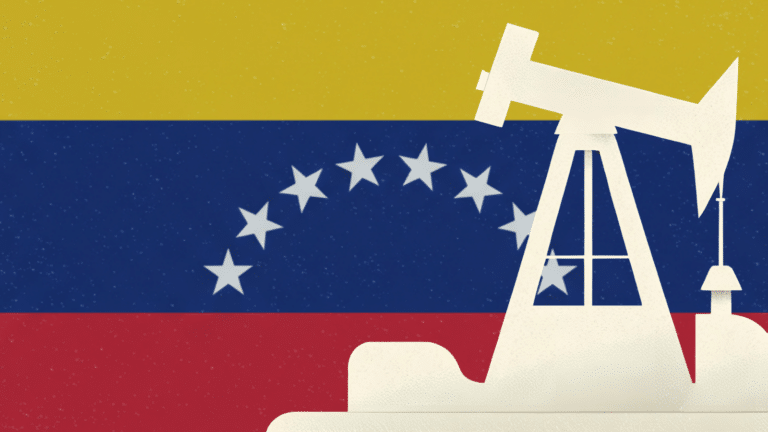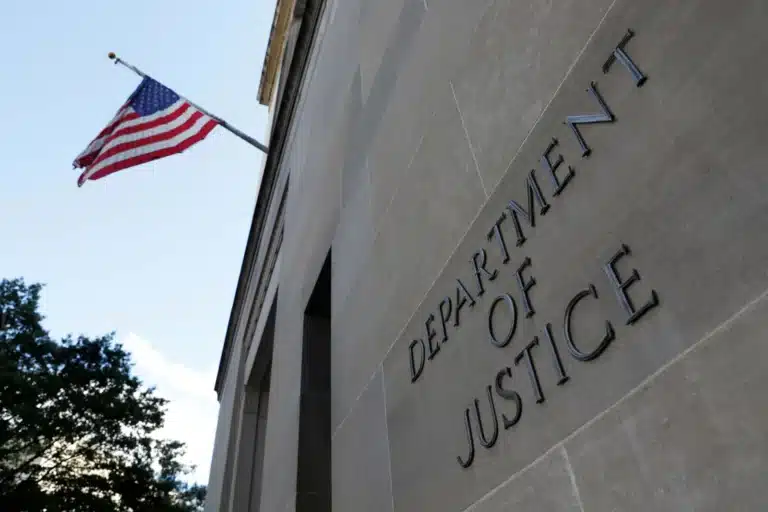Big banks predict catastrophic warming, with profit potential
Morgan Stanley, JPMorgan and an international banking group have quietly concluded that climate change will likely exceed the Paris Agreement's 2 degree
Current Access Level “I” – ID Only: CUID holders, alumni, and approved guests only
Commentary by Richard Nephew • March 18, 2022
This commentary represents the research and views of the author. It does not necessarily represent the views of the Center on Global Energy Policy. The piece may be subject to further revision. Contributions to SIPA for the benefit of CGEP are general use gifts, which gives the Center discretion in how it allocates these funds. More information is available at https://energypolicy.columbia.edu/about/partners. Rare cases of sponsored projects are clearly indicated.
Governments, international organizations, and businesses are currently focused on how to respond to Russia’s invasion of Ukraine. Their responses have ranged from developing and executing sanctions to supporting the Ukrainian government and humanitarian relief for the displaced population. Meanwhile, Ukraine and Russia are exploring diplomatic solutions, continuing the efforts that Ukraine and its international partners undertook prior to Russia’s attack.
Assuming a negotiated outcome is possible,[1] future discussions of a diplomatic solution will need to be broader, involving the US, the EU, and other partners and addressing how to relax or terminate sanctions put in place against Moscow. If the sanctioning coalition wishes to provide sanctions relief, its diverse actors will need to clarify what Russia needs to do to get relief, establish which sanctions to terminate and when, and define acceptable performance guarantees.
First and foremost, the sanctioning coalition needs to understand and agree on what it is trying to achieve. The objective of the campaign matters considerably. If the intention is to secure Putin’s agreement to withdraw all Russian forces from Ukraine (i.e., a reversion to the pre-invasion situation), this represents a different – and arguably lower – bar than Putin’s agreement to abandon any interest or presence in any pre-2014 Ukrainian territory. Both of these represent lower bars than a Russian commitment to abandon any pretense to interfere with the sovereignty of countries in Russia’s periphery and meaningful steps from Russia in this direction.
The sanctioning partners likely share some goals – e.g., that Putin abandon the invasion – but have different views on the content and timeline of an acceptable diplomatic outcome. Naturally, Ukraine will be interested in its own territorial integrity and restitution; it may demand reparations. Others in Europe may be more fixated on non-interference commitments by Russia. The US may want to secure new arms control arrangements, particularly as Russia has already engaged in limited nuclear saber-rattling. All of these perspectives and interests will be in play in a future negotiation and sanctions relief scenario.
One way to resolve different viewpoints is to provide sanctions relief in phases, much like agreements with Iran from 2013-2015[2] and Libya[3] throughout 2004 did. Prioritizing some sanctions relief at early stages could provide Russia quick wins and address problems created by sanctions for the rest of the global economy. For example, sanctions affecting oil imports, which could include the US, UK, and Canadian oil embargoes (and others that may be enacted), and/or financial sanctions, which will likely play a significant role in whether and how Russia can repair the economic damage it has incurred as a result of its invasion, might be candidates for early elements of a deal. Longer-term sanctions could be left in place until other Russian steps are taken and other Russian threats – such as those to the broader region – are resolved.
This second issue of sequencing will present additional complications, even if it helps achieve some immediate goals and preserve space for longer-term ones. As noted, there will be tremendous pressure on sanctioners to relieve sanctions affecting global economic concerns first, especially those dealing with oil and gas exports. But if those sanctions are broadly defined to include banking ties, which may be Russia’s priority in a deal scenario, then Russia might be perceived as getting too much relief up front. Consequently, unless Russia can offer commensurate steps on its part – such as withdrawing all troops from Ukraine and reaffirming that country’s territorial integrity – sanctioners would be cautious about relaxing them too early in a deal, lest Russia renege. Although the sanctions could be reintroduced in the event of Russian backtracking, some benefits – e.g., releasing frozen assets – would be hard to recover, meriting care in the selection of what to terminate and when.
Moreover, some of the sanctions now in place may be seen as distinct enough from the conflict to merit being maintained even in a deal scenario. For example, sanctions against some oligarchs could remain in place if they were deemed a necessary element in the fight against corruption, both globally and inside Russia. In such a scenario, governments in the sanctioning coalition may be reluctant to abandon them if a deal does not specifically address corruption-related concerns in Russia. For its part, Russia may insist on these measures being relieved, especially if Putin remains in charge and argues that Russia’s economy will have difficulty recovering without this step being taken.
This raises the issue of performance guarantees on all sides. International confidence in Russia is badly shaken. Russia will find it hard for other parties to trust its word, even if the resolution of the current crisis comes with a change in Russian government leadership. Debates between members of the sanctioning coalition and even within its constituent governments will likely address whether any negotiated outcome is sufficient, particularly if concerns regarding Russia become entrenched in national politics.[4] Moreover, this trust gap goes beyond governments. Companies, banks, and other enterprises will likely find it difficult to undertake business with Russia in the future even if sanctions relief is an early and prominent element of a deal, which could have a corrosive effect on Russian economic re-integration. They will likely want to see clear indications that the environment has improved and that a decision to re-enter the Russian market will not come with the host of practical and reputational risks that now exist.
Without signs of improvement, investors and banks could hesitate to return, damaging Russia’s ability to benefit from sanctions relief. In 2016-2017, Iran found that lingering uncertainties about the stability of the Joint Comprehensive Plan of Action (JCPOA) and the security environment depressed economic activity with the country. [5] As a consequence, it was initially unable to take full advantage of the benefits of the JCPOA even before Donald Trump’s withdrawal from the agreement in 2018. Russia could face similar challenges. It may even seek to negotiate guarantees on economic performance, which its counterparts in the negotiations would be hard pressed to deliver for legal and political reasons.
It is by no means certain that the crisis in Ukraine will be resolved diplomatically. However, the sanctions approach undertaken by the coalition confronting Russia is intended to support and sustain that diplomacy, making it harder for Russia to reject potential offramps or profit from its invasion. Therefore, sanctions have been and will continue to be key elements of the diplomatic leverage being used with Moscow. They will almost certainly be part of any diplomatic agreement that can be negotiated. Determining the goals of that diplomacy and how sanctions relief will operate within it is a crucial next step for coalition strategists.
[1] Camille Gijs and Zoya Sheftalovich, “Russia Doesn’t Budge in High-Level Talks with Ukraine,” Politico, March 10, 2022, https://www.politico.eu/article/russia-ukraine-lavrov-kuleba-high-level-talks-ukrain/.
[2] Arms Control Association, “The Joint Comprehensive Plan of Action (JCPOA) at a Glance,” March 2022, https://www.armscontrol.org/factsheets/JCPOA-at-a-glance.
[3] Richard Nephew, “Libya: Sanctions Removal Done Right? A Review of the Libyan Sanctions Experience, 1980-2006,” Center on Global Energy Policy, March 21, 2018, https://www.energypolicy.columbia.edu/research/report/libya-sanctions-removal-done-right-review-libyan-sanctions-experience-1980-2006.
[4] Richard Nephew, “The Hard Part: The Art of Sanctions Relief,” The Washington Quarterly 41:2 (2018): 63-77, DOI: 10.1080/0163660X.2018.1484225.
[5] International Monetary Fund, “Islamic Republic of Iran 2016 Article IV Consultation Staff Report,” February 27, 2017, https://www.imf.org/~/media/Files/Publications/CR/2017/cr1762.ashx.
Steps by the second Trump administration show it is taking a tougher stance against the regime of Nicolas Maduro. Trump recently issued an executive order that could levy a 25...

Trump’s abandonment of antibribery efforts will hurt—not help—U.S. companies.

As Indian Prime Minister Narendra Modi makes his first visit to Washington in the second Trump administration, energy will likely take a front seat in United States-India relations. Due to...

Full report
Commentary by Richard Nephew • March 18, 2022